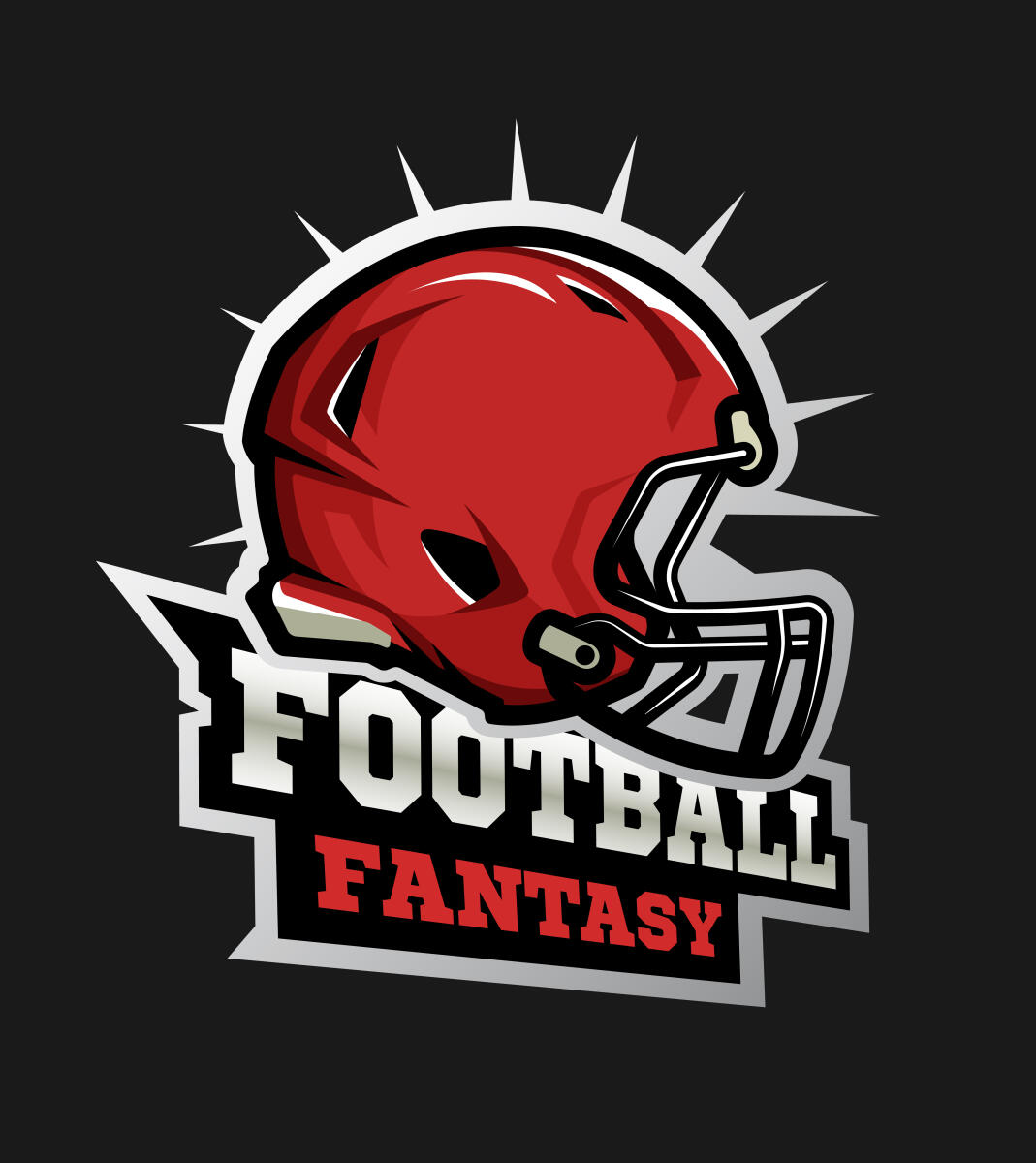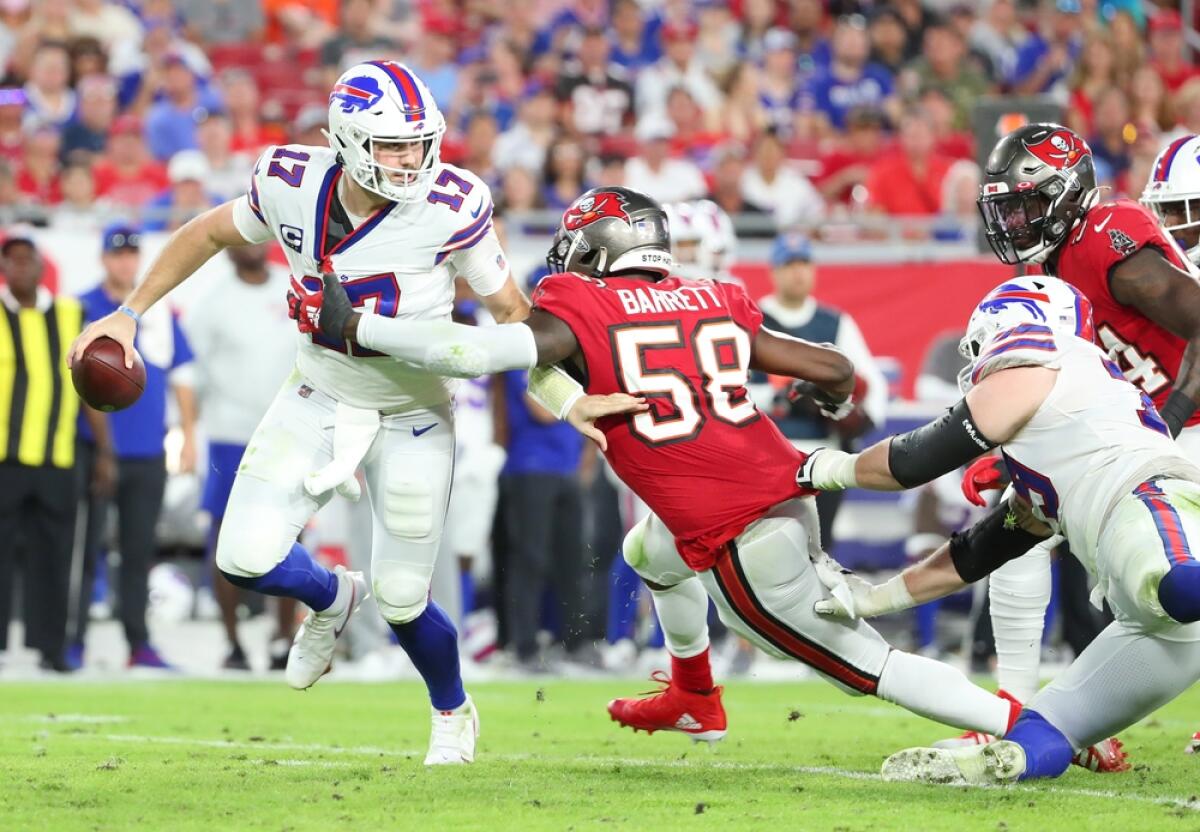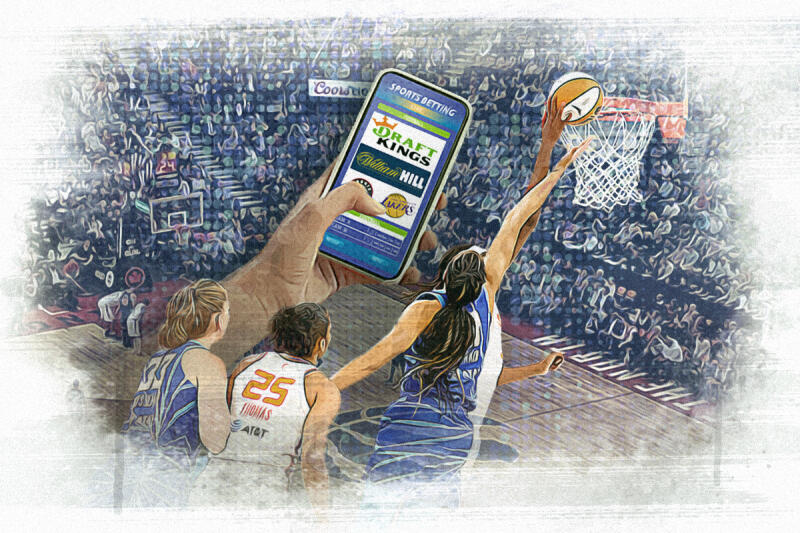Draft Strategies for Fantasy Football
So you’ve decided to join a fantasy football league. Congratulations! But now what?
Now that you’re past the excitement of joining a league, you’re next step is building your team. In fantasy football, that typically happens with a draft.
There are plenty of ways for a league to handle a fantasy football draft — from an auction to an offline draft — but the most common is a snake draft, with the draft order flipping each round.
While there are many ways to skin a cat — or draft a fantasy football team — there are a plethora of ways to give yourself the best chance to win your league and earn bragging rights — and hopefully some money — over your fellow leaguemates and opponents.
This guide will give you the basics along with tips and tricks on how to draft the best fantasy football team and potentially win a fantasy football championship.
What is Fantasy Football and How to Play it?

For the uninitiated, fantasy football doesn’t involve you strapping up the shoulder pads, chin strap, and helmet. Instead, players act as the general manager of a digital football team that consists of players on different National Football League (NFL) teams.
Fantasy football was invented back in 1962 by Oakland Raiders minority owner Bill Winkenbach, who created the first fantasy football league with his friends in a New York City hotel. The league was named the GOPPPL (Greater Oakland Professional Pigskin Prognosticators League).
General managers score points based on how the players perform in game. Fantasy points can be accrued by gaining yards through the air or on the ground, catching passes, and scoring touchdowns.
General managers then set a starting lineup and play head-to-head to determine a winner in each week — and ultimately a fantasy football championship at the end of the season.
Typically, leagues consist of anywhere between eight and sixteen team leagues or more. The most common league sizes are 10, 12 and 14.
Roster sizes depend on the league format. A standard starting lineup consists of one (1) QB, two (2) running backs, two (2) wide receivers, one (1) tight end. Some leagues will have an extra wide receiver spot and/or extra starting spots for running backs, wide receivers and tight ends called a FLEX spot. Some leagues have starting spots for kickers and defense and special teams as well.
To play fantasy football, prospective players can sign up on a multitude of different sites. The most popular fantasy football hosting sites include ESPN, CBSSports, NFL.com, Yahoo! Sports, Sleeper, MyFantasyLeague, among others.
Users can sign up on each website and/or down the corresponding app to sign up and play in leagues.
Best Tips for Fantasy Football Draft Strategy

There are many ways to build a winning team in fantasy football, but there are some common tips and rules that successful teams utilize in the draft process.
It’s important to remember that while fantasy football success is never guaranteed because general managers are not in control of the game or the decisions made, there is no perfect strategy to winning your league — which makes fantasy football even more fun. The variance and unpredictability will make even the most knowledgeable football fan question his decisions.
- Know the rules!
- Wait on D/ST and Kickers
- Do your research!
- Be adaptable!
- Draft the best player available
- Have fun!
Tip 1: Know the rules!
The first thing any fantasy football player should do is read the rules for the league that they are joining.
Fantasy football is simple in nature. The objective is to score more points than your opponent. But knowing the best way to score points is the key.
Unfortunately, leagues don’t always have the same rules. One league could have standard scoring, with players only scoring points for yards gained and touchdowns scored, while others could be half-PPR or full-PPR, which gives either .5 or one fantasy point per catch.
That’s just one rule you’ll want to be aware of. There plenty more.
Are touchdown passes worth six points? How much is a fumble or interception worth? Does the league have a spot for an individual defensive player (IDP)?
It’s vital to know the rules of the game because — let’s be honest — most of your leaguemates won’t. Take any advantage you can get.
Tip 2: Wait on D/ST and Kickers
While some leagues employ an IDP, other leagues have completely gotten rid of the defense and special teams spot in fantasy football lineups. Most standard leagues still have the position. The same goes for kickers.
It’s important to not overdraft these positions in drafts where you could add valuable players to your bench.
Both positions, if still a part of your league, are important because they’re in your starting lineup, but they are both completely random and replaceable.
Take defense and special teams, for example. You could draft a top-five defense that pitches a shutout, but if the defense or special teams didn’t score or notch a sack or turnover then they still didn’t score many points. Not to mention, if that defense goes up against a high-powered offense, like the Kansas City Chiefs, Philadelphia Eagles or Buffalo Bills, then the D/ST could be completely unusable.
The best strategy is to stream a defense, aka pick up a defense with good matchup each week. You never know, you could end up finding an under-the-radar defense and special teams unit that could turn into a league-winner for you and it wouldn’t have cost you a valuable draft pick.
Kickers are the same.
Sure, it’d be nice to have Baltimore Ravens kicker Justin Tucker on your roster, but, chances are, he’s going to be drafted way too high in your leagues. You can find a kicker who can put up similar scores without having to waste that valuable draft capital.
Streaming kickers on high-powered offenses or that will be in games with high point totals is the smart option.
If you have to draft a D/ST or kicker, it’s best to wait until your last handful of picks.
Tip 3: Do your research!
There’s no shortage of fantasy football content on the internet so there’s no excuse to not be prepared for your fantasy football draft.
Having a basic gameplan, setting your draft queue and establishing your targets in each round is a good way to prepare for your big draft.
Don’t be that person who drafts the running back who was just injured and is out for the season.
Doing a little bit of research can go a long way and set you apart from your lazy opponents.
Tip 4: Be adaptable!
Let’s face it: You’re not going to draft every player you want. It’s scientifically impossible.
Don’t let that get you down, though. Knowing that and being able to pivot and adapt on the fly is an underrated skill in fantasy football drafts.
In snake drafts, the person drafting in front of you will surely pick your next target, so you’ll have to be quick on your feet when you’re on the clock.
This is where your research from Tip #3 helps. If you go in with a strategy, you’ll be able to quickly recover from getting sniped by your annoying brother-in-law in the third round of drafts.
It’s smart to not go in with too rigid of a plan, though.
Don’t enter the draft expecting to pick a specific position and then forcing a lesser player because you told yourself that you have to draft a wide receiver in that specific round.
Drafts are live and unpredictable, so if a talented player you weren’t expecting drops to you, take them without having to worry if they fit your starting lineup.
Tip 5: Draft the best player available
This might sound obvious, but when you’re on the clock and you’re worrying about your RB2 then you might make some drastically desperate decisions.
The NFL is an unpredictable beast, but one thing you can bank on is that talented players score fantasy points and get the most opportunities.
Never make a decision based on the position they play. Instead, pick the best player available and worry about lineups and starters later. With the amount of injuries and attrition in the sport, you’re going to need as much talent and depth as possible to survive the 17-week season.
Tip 6: Have fun!
Here’s another one that might sound obvious, but it really isn’t.
While winning is obviously fun and the end goal, fantasy football is, at its core, entertainment. It should be fun.
If that means drafting someone a round or two earlier than you wanted to, then do it. You should like the players on your roster and want to root for them.
Don’t ruin a league or your team by completely over drafting guys, but in the middle and later rounds it’s OK to “reach” for your guys.
Remember, it’s just a game.
Positional Cheat Sheet
In this section, we’ll break down each position in fantasy football leagues and how to value them.
Let’s start with quarterback (QB).
QB
The quarterback is arguably the most important position in all of American sports. The quarterback is in charge of running the offense, and so with the ball in his hands on every play, he’s likely to be the highest scorer in fantasy football lineups.
However, in 1 QB leagues — where only one QB can be started at once — their value is diminished because in a standard-sized league, only 10 to 12 QBs are started in a league with 32 teams.
With the most important position in all of sports being minimized, superflex or two-quarterback leagues are growing in popularity. Superflex leagues add one (1) FLEX spot that can be for a QB, RB, WR or TE so fantasy football managers have the option to start a second QB, which greatly increases the players’ value. Two-QB leagues, as the name suggests, players must start two QBs no matter what.
Standard QB scoring is one (1) point for every 25 yards thrown and four (4) fantasy points for touchdown passes. Some leagues, however, to increase the value of QBs gives six (6) points per touchdown pass.
Which quarterbacks should you target in leagues? That’s a good question.
While you might want to grab a guy like Tom Brady or Matthew Stafford, the best QBs to draft are athletic passers who add value in the running game. Players such as Lamar Jackson, Justin Fields, Jalen Hurts and Josh Allen not only score points through passing but their running game essentially makes them a RB1 or RB2 without taking up an extra starting spot. It also gives those players a solid floor in case they don’t have a good passing game.
Let’s move on to running back.
RB
In one-QB fantasy football leagues, the running back spot is typically the most valuable position. That’s because there’s usually a lack of tantalizing options as teams have gone to a more running back by committee approach and running back suffer a higher rate of injury. That makes the running back position incredibly volatile, but running backs are usually the highest-scoring players outside of the QB and you can start two or more of them in leagues.
Drafting a running back is a high risk, high reward proposition. As we mentioned before, running backs have a higher rate of injury than any other position because they get tackled by 300-plus pound defensive lineman all game. However, teams with good running backs almost immediately become contenders in fantasy football leagues.
Standard running back scoring is one (1) fantasy point per 10 yards gained and six (6) fantasy points for a rushing touchdown.
Running back injuries are random, so it’s important to not judge running back who have been injured in previous seasons. In fact, players coming off an injury could be a good value in fantasy football drafts.
If you play in any type of points per reception (PPR) league, you’ll want to target running backs who have roles in the passing game as receiving adds even more value to runners.
Now, on to wide receivers.
WR
While many will focus on building up their running back group, don’t sleep on the impact of wide receivers as the running back position continues to get devalued and minimized.
Elite wide receivers typically score fewer points than elite running backs and wide receivers are more available than running backs since most teams run at two or three receiver sets in a more pass-happy NFL. However, receivers have better longevity and aren’t injured as often.
The elite receivers are closing the gap on running backs as well.
It’s important to make sure to draft multiple receivers you feel comfortable starting in fantasy football leagues. They are harder to find once the draft is over while running backs can be found on the waiver wire because of the injury concerns.
The wide receiver position is similar to the running back. One (1) fantasy point is accrued for every 10 receiving yards while a touchdown catch is worth six (6) fantasy points.
In PPR leagues, receivers are even more valuables – especially players who catch a lot of passes. In full-PPR leagues, one reception — even if it doesn’t gain a single yard — is equal to a 10-yard gain.
Finally, let’s talk about the least valuable skill-player position in fantasy football: tight end.
TE
The tight end position is a tough nut to crack, especially in fantasy football drafts.
With only a handful of tight ends who actually matter, it’s a position that is incredibly hard to solve — which makes the top-tier players even more valuable.
For young players, tight end is one of the hardest positions to learn and play, so it takes time for players to develop. That’s much different than the other positions because we get an understanding of how good these players are pretty early in their careers.
With a lack of reliable tight ends, it makes it incredibly difficult to find them if you miss out on the elite talent. However, if you do find one in the late rounds or on the waiver wire, it’ll pay off even bigger because of the lack of draft capital you used and the fact that there are so few good players at the position.
While you certainly want good tight ends, the best strategy for draft tight ends is to target players who are better receivers than blockers. Unfortunately, blocking for tight ends kills their value since they are unable to catch a pass on that play. That means targeting converted wide receivers and guys in high-powered offenses is the way to go.
Strength in numbers is also a way to go about the position. Depending on roster size, you could wait until later rounds and draft two or three guys who could have potential roles in an offense and breakout.
In smaller-roster leagues, going with one tight end and trying to find one on the waiver wire, or what some people call “streaming tight ends” is also a viable strategy.
League Formats
There are almost way too many fantasy football league variants to name, but we’ll go with some of the most popular formats.
Standard
Standard leagues award fantasy points for yards gained and touchdowns scored, that’s it. There’s no bonus for points per reception or anything like that. It’s very, well, standard.
Points Per Reception (PPR)
Points per reception (PPR) leagues award fantasy points for yards gained and touchdowns scored but also gives a bonus for passes caught by a player. The most standard PPR formats are half-PPR, where receptions are worth .5 fantasy points, or PPR formats, where receptions are worth one (1) fantasy point.
Redraft
Redraft leagues are your standard yearly leagues that reset rosters after the year is over. Once your season is over, you go back to a blank slate and must redraft a new team every year. This is the most common fantasy football league and if you’re a casual player — which if you’re reading this, you probably are — this is the league you most likely signed up for.
Keeper
Keeper leagues allow managers to “keep” players on their roster from previous seasons. The number of keepers and the penalty for keeping them is based on the league you’re in.
Dynasty
Dynasty leagues begin with a startup draft, like a redraft or keeper league, but instead of only keeping a few players or resetting rosters at the end, dynasty rosters stay exactly the same. Players remain on rosters until they are traded or released. Leagues typically have rookie drafts every year like the NFL does.
Dynasty is the most similar to running a football team as a general manager.
Bestball
Bestball is a type of scoring for fantasy football leagues. In standard leagues, managers are expected to set a starting lineup. In bestball fantasy football leagues, managers do not set their lineup. Instead, the highest possible score for your team — starting lineup and bench — are taken as your score. It values overall rosters strength over just a starting lineup and won’t punish players for forgetting to set a lineup or if a player gets hurt in the game.
IDP
IDP stands for individual defensive player. Some leagues have one or multiple spots for a defensive player since fantasy football league is mainly about offensive players, this allows for defensive players to have value depending on the league.
Players can accrue points by making tackles, sacks and forcing turnovers.
Auction Draft Strategy
Most fantasy football leagues employ a snake draft, which alternates draft position every round. Another popular way to do a fantasy football draft is an auction.
In an auction draft, draft order doesn’t matter nearly as much. Instead, every manager is given an allotted amount of money to bid on players. The highest bidder gets the player.
It’s a nice change up from being at the whim of draft order and getting your guy taken right in front of you. In auction, you’re in control. If you want to blow it all on star players, then you have that opportunity. If you want to save your money and spread it out over an entire team, then you have that prerogative as well.
What are some auction strategies you should use? We’re glad you asked.
Bidding Principle 1: Never bid on a player you don’t want.
Auction drafts will test your patience and willpower. Sometimes it’s fun to try and raise the price so other players overpay for a guy you might not want on your team, but that’s a dangerous game to play.
If you don’t truly want the player then absolutely do not bid on that player because you might get stuck with with them while losing money from your allotted budget.
Instead, pick and choose where you want to use your money and get in a bidding war for an actual player you want to roster.
Bidding Principle 2: Make a budget
It’s important to prepare for your auction draft. Know which players you want to target and set an amount for that player.
If you set a budget for each player or position on your roster, you can see where you want to spend the money and if you have a surplus in your budget, you can overbid for a player or two.
Don’t break your budget unless you’re willing to give up on a lesser talent.
Coming in with a plan will make it easier in case you need to pivot, which leads to our next bidding principle.
Bidding Principle 3: Pivot!
The auction draft will almost never go how you imagine. Some of your targets will go for way more than you’re willing to spend while other players might turn into bargains.
If you come in with a plan etched in stone then you don’t give yourself the ability to adapt and pivot in case there’s value on the board.
Make sure to keep an open mind and if a player is cheaper than you budgeted for them then that makes it easy to pivot bidding on them.
Bidding Principle 4: Nominate players you don’t want in the beginning
Nominating players is an art form in auction drafts. If you nominate a player you want then it becomes easier to outbid you or, at the very least, drive up the price considerably.
In the early rounds, don’t nominate a player you want. Let someone else do that.
The start of auctions is always interesting as the market is still being established. This could mean finding a value or overpaying from the jump. If you nominate a player you don’t want, you avoid both of those problems as someone else will either get a value on a player you didn’t covet or someone overbid for someone you didn’t want. That’s a win-win.
Bidding Principle 5: Blow it all, baby
Auction drafts are really a game of chicken. It’s a balancing act between getting value and getting a player you really want. However, sometimes managers are worried about blowing it all early and letting good players slip by for cheap.
Whatever you do, make sure you spend every single dollar in your budget because you can’t take it with you.
If you decided to wait on studs and let others outbid you then make sure you don’t get outbid for second and third tier players as you’ll probably have the most money leftover. If you used all your money on studs and have just a couple bucks left, blow it all in the end because you don’t want to leave an auction draft with regret. That’s for sure.
Fantasy Football Draft Strategy FAQ
Q: What position should you draft first in fantasy football?
A: That’s obviously a tough question without more context, like the scoring rules, draft spot and who’s available but, generally, you should always draft the best player available. If that’s a RB then take the RB, if it’s a WR then take the WR. It’s better to not force a position for a lesser player because that’ll almost always backfire. The only time to avoid this is potentially for the QB and TE position as they are typically the only position you start one of them. In that case, you should always lean toward WR and RB.
Q: What is the best draft position for fantasy football?
A: There is no right or wrong spot here. The advantage of drafting early is you get the better player early on, which could end up being a dominant player who wins your league, but you have to wait longer for your next picks. The opposite is true for players drafting later. There are advantages to every spot.
Q: What is the best strategy for a snake draft?
A: The best strategy is to always pick the best player. In a snake draft, make sure to look at the managers before and after you. If they’ve already drafted a QB or TE and you haven’t, you might be able to wait as those managers probably won’t double up on the position until later in the fantasy football draft.
Q: Should you draft players from your favorite fantasy football team?
A: Why not? While the ultimate goal is to win your league and bragging rights – and perhaps some cold hard cash – the real goal should be entertainment. In most leagues, you have less than a 10% chance of winning it all, but if you pick players you generally enjoy then it’ll be a much more enjoyable experience. If that means drafting players from your favorite team then so be it.
Q: When should you draft a kicker or D/ST?
A: Never, unless the site you’re using forces you, too. Always draft skill players and then drop (or trade) them to open up a roster spot for a kicker or D/ST. There’s no point in wasting valuable draft capital on a position you will probably churn throughout the year. You’ll probably end up finding a better play on the waiver wire, always. Trust us.
Our editorial content strives to be highly informative and educational to our audience, especially for visitors who are new or relatively new to analyzing and predicting sporting event results. All of our content is created by informed writers with backgrounds in their subject area and reviewed for omissions or mistakes.
Our editorial team is run by individuals with many years of experience in digital publishing, editorial, and content production. Our editorial content is always marked clearly in any instances where it may be sponsored by a third party, though it is still reviewed by our staff to ensure it remains consistent with our company mission.
- Popular
- Latest







